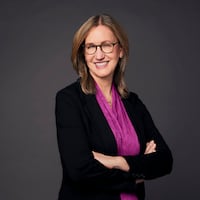How we got the story
The Atlanta Journal-Constitution obtained CEO employment contracts, public IRS records and internal documents from local nonprofit hospitals to study the relationship between quality of care and bonuses awarded to hospital CEOs.
All nonprofits are required to disclose financial and salary information to the IRS, in exchange for their tax-exempt status. In Georgia, many nonprofit organizations operate hospitals owned by public hospital authorities. Those hospital systems are subject to additional transparency requirements under the Georgia Open Records Act. While some local hospitals that operate authority-owned hospitals readily complied with the AJC’s requests, some others denied that the Act applied to them. The AJC continues to pursue this matter with these hospitals
Pete Correll, chairman of the Grady Memorial Hospital Corporation Board and a former CEO of Georgia-Pacific, said transparency is important.
“I think Georgia has got a problem in the number of hospitals they allow to be nonprofits vs. the amount of indigent care they provide,” Correll said. “When we took over Grady, we said we haven’t got any secrets. This is a community venture. We’re all in this together. We’re not going to be great at everything, but we’re never going to be accused of ‘You wouldn’t show it to us.’ If people want to see it – it’s there.”
Northside Hospital says its success makes it easy to justify the $5.3 million in salary, bonus and cash retirement benefits it paid its chief executive in 2011.
To earn his $1.2 million bonus alone, Northside CEO Robert Quattrocchi met every goal in his incentive plan, including targets related to quality of care and “stakeholder satisfaction,” the hospital said.
Exactly how did these targets make Northside better for patients? Did Northside cut its infection rates? Did it reduce medical errors?
“I really don’t want to get into the specific goals,” said Richard Arenburg, an Atlanta attorney who advises Northside on executive compensation. “There’s only so much Northside wants to disclose to its competitors.”
Atlanta’s nonprofit hospitals routinely dangle six- and seven-figure bonuses in front of their chief executives, but experts say it’s important to know what those CEOs are being paid to do. In a system distorted by gross inefficiency and dangerous lapses in quality, are leaders being incentivized to transform health care or simply squeeze more money out of it?
At Gwinnett Medical Center, for example, part of the CEO’s bonus in 2013 hinged on whether the hospital performed a certain number of surgeries. At DeKalb Medical Center, the main emphasis was on cutting losses by growing revenue — even nonprofits have to make a certain amount of money to survive — but finances received a higher priority in the CEO’s incentives package than quality goals.
Children’s Healthcare of Atlanta, which paid its CEO a $547,000 bonus and “retention” payment in 2012, said quality was part of its chief executive’s incentive plan. But Children’s refused to reveal its quality measures or how they influenced the bonus. At Atlanta nonprofit hospitals that did reveal details, keeping patients safe from infections and achieving higher-quality standards in general rarely account for more than 30 percent of the CEO’s total incentive plan.
By law, nonprofits must report their executives’ salaries and incentives to the IRS, but they don’t have to explain what those incentives are for. At the request of The Atlanta Journal-Constitution, some Atlanta hospital systems readily shared the details of their CEOs’ targets and also reported whether the leaders met or missed those goals. WellStar Health System, DeKalb Medical and Grady Memorial Hospital were particularly open in this regard.
Others, like Northside and Emory, refused to go beyond a summary. Emory Healthcare is a private system with no obligation to disclose such details. Northside, however, operates a publicly owned hospital and is subject to more disclosure requirements under Georgia’s Open Records Act.
‘Be opaque and have a pretty atrium’
Whether it’s for the $8 aspirin or the $12,000 ER trip, consumers and policymakers have started demanding answers about the business of health care. Those pushing for reforms say hospital systems must stop feeding at the “fee-for-service” trough, which rewards hospitals for admitting more patients and doctors for ordering more tests and procedures.
The goals set for hospital CEOs offer a window into the mindset of a hospital system and whether it’s focused on value, on keeping the community healthy and on making sure patients are protected from errors and infections.
“The old model was volume: do lots of stuff, be opaque, and have a pretty atrium and an award from someone that says you’re good,” said Jamie Orlikoff, a nationally recognized expert on hospital governance. Traditionally, hospitals often could not or would not answer questions about their quality or costs.
“We’re moving away from that,” Orlikoff said.
Because most Atlanta hospitals are nonprofit organizations exempt from paying taxes, they have to demonstrate that their operations benefit the public. The IRS requires hospitals to disclose, and be in a position to justify, how much they pay their highest earners.
But U.S. Sen. Chuck Grassley, R-Iowa, a longtime critic of high salaries at nonprofits, contends there isn’t enough accountability and that the process of justifying compensation has become a game revolving around a handful of consultants.
Describing what he called “kind of a ratchet effect,” Grassley said the game works like this: If the average salary for a CEO is $750,000, a consultant says the board could justify paying their guy $1 million. Pretty soon $1 million becomes the marketplace standard and the consultants can then justify $1.2 million.
“The more [the consultants] recommend, probably the more they get paid,” Grassley said. “Ratchet it up next time and they probably get paid more.”
The boards that govern nonprofit hospital systems design CEO salaries and bonus programs. At a time when many doctors are employed by hospital systems, these CEOs play a major role in driving how health care will modernize and whether their doctors and hospitals are leading the way — or falling behind — on quality of patient care.
“The fundamental tenet of CEO compensation, or any organization approach to compensation, is very simply — you get the behavior that you reward,” Orlikoff said. “Even though that is so painfully obvious, many organization boards do not really grasp that and therefore do not spend nearly as much oversight and attention to what it is they are rewarding vs. what it is they say they want to achieve.”
A $1.1 million ‘retention’ payment
In the Atlanta area, a $1 million base salary for a nonprofit hospital CEO is typical. But the pay package can go way beyond the base.
John Fox, CEO of Emory Healthcare, received a $1.1 million “retention payment” in 2011 – a reward Emory said was earned “over many years” for staying at Emory instead of leaving for another job.
Fox’s total compensation of $3.4 million included a $1.1 million base salary and a bonus of $492,000. Emory also set aside $609,000 for Fox in “deferred compensation,” but he must meet certain conditions to receive all of it.
Emory would not reveal Fox’s exact bonus targets. But it did say his bonus is tied to improvements on such quality measures as reductions in mortality rates, improving patient satisfaction and reducing readmissions. It also noted that Fox’s leadership and the incentive plan’s focus on patient care helped two Emory hospitals land in the top 10 rankings for quality among academic medical centers.
While many doctors have seen their incomes remain stagnant or shrink with changes in health care, Fox’s compensation has been rising. In 2009, his total was $2.2 million; two years later, it had grown by more than $1 million.
Fox’s pay package wasn’t the highest among the CEOs of Atlanta’s nonprofit hospitals in 2011. Northside’s CEO topped the charts with total compensation in 2011 of more than $5.3 million.
‘What is to be lost by disclosing?’
Northside Hospital in Atlanta is a public facility owned by the Hospital Authority of Fulton County, which then leases the hospital to the nonprofit Northside Hospital Inc., which runs the health system. The system owns hospitals in Forsyth and Cherokee counties.
More than half of what Quattrocchi was paid in 2011 came from a retirement plan payout that he had earned over many years and shouldn’t be considered compensation for 2011 alone, Northside said.
“In recent years, Northside Hospital’s performance under Mr. Quattrocchi’s leadership has far surpassed that of its competitors,” Northside spokesman Russ Davis said in a letter to the AJC.
While Northside wouldn’t reveal many details, it said the CEO’s incentive plan included financial factors, “culture” and strategic planning on top of stakeholder satisfaction and quality and operations.
Orlikoff, the governance expert, said boards should be comfortable revealing the factors behind the incentive program.
“What is to be lost by disclosing what the focus of the organization is?” he said.
The Mayo Clinic, the Cleveland Clinic and the Dartmouth-Hitchcock health system in New Hampshire are frequently held up as models for where healthcare needs to go. None of those systems pays bonuses to its CEO. Their leaders say big bonuses tied to financial results don’t fit in with their missions.
Northside and Emory both said their CEO salaries were reasonable and consistent with what CEOs at similar organizations are paid. Both said they had used consultants to verify that.
‘You have got to say fiscally sound’
Bob Wilson, a former district attorney in DeKalb County, is one of the board members setting goals for the DeKalb Medical system. Wilson said the board decided to hire a new CEO in 2011 and set goals to help the executive focus on efficiency and quality.
“Everywhere I go, when I talk to people about the hospital, I tell them the board has two primary functions,” Wilson said. “You can put them in any order you want, but there are only two and they are of equal weight. One — you have got to stay fiscally sound, because if you don’t, you won’t be here to give health care. Number two, you have got to give quality health care or you shouldn’t be here.”
DeKalb shared the CEO’s incentive plan in detail. Although it tied just 10 percent of the bonus to quality targets, other goals in the plan relate to quality, too.
The WellStar Health System, one of the power players in the Atlanta health care marketplace, is also one of the region’s most transparent systems.
WellStar shared the details of CEO Reynold Jennings’ goals and a report card that measured his performance.
The quality targets focused on cutting down on health care-associated infections and making sure its hospitals routinely followed protocols proven to achieve the best results for patients.
Over the past two years, Jennings met or exceeded his quality targets. The system fell short, however, on other measures last year, including patient satisfaction in some parts of the system and medical staff “partnership” scores.
The performance earned Jennings a bonus of $380,000 last year, WellStar said, on top of his $975,000 salary.
WellStar said Jennings qualified for a 3 percent merit raise the past two years but turned it down. He has also pledged to donate $25,000 a year to the WellStar Foundation.
‘When we took over, they couldn’t make payroll’
Running Grady Memorial Hospital, the massive charity hospital in downtown Atlanta, poses some of the toughest challenges facing any health care executive. But that doesn’t mean its CEO gets the biggest paycheck in town.
Grady CEO John Haupert’s base pay for 2013 was $700,000. He earned his target bonus — $210,000 — 30 percent of his base pay, Grady said.
The hospital is extraordinarily open about what it asks Haupert to accomplish. Grady’s board asked Haupert in 2013 to reduce hospital-acquired conditions – including serious infections and falls – by 20 percent. He was also pushed to reduce Grady’s readmission rates enough to significantly improve its rankings on this measure against other similar hospitals.
As chairman of the Grady Memorial Hospital Corp. Board, Pete Correll plays a major role in shaping Haupert’s goals. The former CEO of Georgia-Pacific says incentive plans make sense in the nonprofit environment.
“Incentives are appropriate because they create focus,” Correll said. “If you want a management team to focus on certain things, then you need to have specific goals, they need to be related to incentives and everybody in the organization’s goals need to line up under those. That is the system we started at Grady when we took over in 2008.”
Is a profit incentive appropriate at a not-for-profit operation?
“Grady is a classic example of, if you do not make enough money to keep the doors open and fund the capital program, then you see what happened to Grady,” Correll said. “When we took it over, they could not make payroll.”
But it can’t be all about the money, he said. “Unlike a profit entity,” Correll said, “it can’t be the dominant factor. It has to be one of several.”
A national study of CEO compensation at nonprofit hospitals reported last year that higher CEO pay was linked to patient satisfaction and having the latest-and-greatest technology, but that it was not connected with delivering high quality care or providing vast benefits to the community.
“There are a lot of people who benefit from nonprofit hospitals, but a lot of them are not the patients,” said Mike Rosenberg, who questioned the priorities of Northside Hospital last year after Northside dramatically increased charges to him and other cancer patients after it took over two large oncology practices.
The community benefits, Rosenberg said, when a hospital is laser-focused on big issues that clearly help patients, such as providing quality care, conducting ground-breaking research and even sending out bills that are accurate and fair. New buildings, fancy medical technology and great pay for executives should not be the priorities, he said.
“It’s that old phrase —always follow the money,” Rosenberg said. “When you look at where the money is being spent, that is where you are going to find out exactly what the focus of an institution is.”
About the Author
Keep Reading
The Latest
Featured



